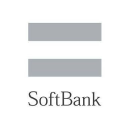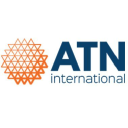SFTBF

SoftBank Group Corp.
SFTBF
(1.8)59,00 USD
0.18% ROA
0.71% ROE
178.71x PER
12.754.667.958.506,00 USD
176.93% DER
0.51% Yield
1.1% NPM
SoftBank Group Corp. Stock Analysis
SoftBank Group Corp. Fundamental Analysis
Fundamental analysis in stock investing is like studying the foundation of a house before buying it. It involves looking at a company's financial health, like its earnings, assets, and debts, to determine if it's a good investment based on its fundamental strength and potential for growth.
| # | Analysis | Rating |
|---|---|---|
| 1 |
ROE
The stock's ROE exceeds expectations (17.28%), revealing strong profitability and efficient use of shareholders' equity, making it an attractive investment opportunity. |
|
| 2 |
PBV
The stock's low PBV ratio (0.89x) suggests it's undervalued, making it an attractive opportunity for investors. |
|
| 3 |
ROA
The stock's ROA (4.54%) shows that it's doing a pretty good job at making money from its assets, making it a solid choice to invest and earn steady profits. |
|
| 4 |
Graham Number
The company's Graham number indicates that it is undervalued compared to its stock price, suggesting a potentially favorable investment opportunity. |
|
| 5 |
Dividend
The company's track record of consistently paying dividends in the last three years highlights its dedication to providing investors with regular income. |
|
| 6 |
DER
The company has a high debt to equity ratio (224%), which means it owes a lot of money compared to what it actually owns, making it financially risky. |
|
| 7 |
Revenue Growth
Company's revenue has stayed stagnant, showing no signs of improvement and making it a less favorable choice. |
|
| 8 |
Net Profit Growth
The net profit of this company has shown no signs of growth over the last five years, suggesting limited profitability and making it a less attractive investment opportunity. |
|
| 9 |
Assets Growth
Company's revenue has stayed stagnant, showing no signs of improvement and making it a less favorable choice. |
|
| 10 |
Dividend Growth
Potential investors should be aware that the company's dividend growth has shown no upward trend in the past three years, indicating limited potential for increased returns. |
|
| 11 |
Buffet Intrinsic Value
The company's stock appears overvalued (-18.823) by Warren Buffett's formula, suggesting a less favorable investment opportunity as its market price exceeds its estimated intrinsic value. |
SoftBank Group Corp. Technical Analysis
Technical analysis in stock investing is like reading the patterns on a weather map to predict future weather conditions. It involves studying past stock price movements and trading volumes to make predictions about where a stock's price might go next, without necessarily looking at the company's financial health.
| # | Analysis | Recommendation |
|---|---|---|
| 1 | Awesome Oscillator | Buy |
| 2 | MACD | Buy |
| 3 | RSI | Hold |
| 4 | Stoch RSI | Sell |
SoftBank Group Corp. Price Chart
Financial Statements
Financial statements are like report cards for companies. They show how much money a company makes (income statement), what it owns and owes (balance sheet), and where it spends its money (cash flow statement), helping stock investors understand if a company is healthy and worth investing in.
Income Statements
An income statement for a company is like a scoreboard for its profits and losses. It shows how much money the company made (revenue) and how much it spent to make that money (expenses), helping stock investors see if a company is making a profit or not.
Revenue in stock investing is the total amount of money a company earns from its sales, and it's a key factor that investors consider to assess a company's financial performance and growth potential.
| Year | Revenue | Growth |
|---|---|---|
| 1997 | 359.742.000.000 | |
| 1998 | 513.364.000.000 | 29.92% |
| 1999 | 528.159.000.000 | 2.8% |
| 2000 | 423.221.000.000 | -24.8% |
| 2001 | 397.105.000.000 | -6.58% |
| 2002 | 405.315.000.000 | 2.03% |
| 2003 | 406.892.000.000 | 0.39% |
| 2004 | 517.394.000.000 | 21.36% |
| 2005 | 837.018.000.000 | 38.19% |
| 2006 | 1.108.665.000.000 | 24.5% |
| 2007 | 2.544.219.000.000 | 56.42% |
| 2008 | 2.776.169.000.000 | 8.36% |
| 2009 | 2.673.035.000.000 | -3.86% |
| 2010 | 2.650.729.000.000 | -0.84% |
| 2011 | 3.004.640.000.000 | 11.78% |
| 2012 | 3.202.435.000.000 | 6.18% |
| 2013 | 3.378.365.000.000 | 5.21% |
| 2014 | 6.666.651.000.000 | 49.32% |
| 2015 | 8.670.221.000.000 | 23.11% |
| 2016 | 9.153.549.000.000 | 5.28% |
| 2017 | 8.901.004.000.000 | -2.84% |
| 2018 | 9.158.765.000.000 | 2.81% |
| 2019 | 9.602.236.000.000 | 4.62% |
| 2020 | 6.185.093.000.000 | -55.25% |
| 2021 | 5.628.167.000.000 | -9.9% |
| 2022 | 6.221.534.000.000 | 9.54% |
| 2023 | 6.678.212.000.000 | 6.84% |
| 2023 | 6.570.439.000.000 | -1.64% |
| 2024 | 6.756.500.000.000 | 2.75% |
| 2025 | 6.806.988.000.000 | 0.74% |
Research and Development Expenses are the costs a company incurs to create and improve its products or services, which can be important for investors to evaluate a company's innovation and potential for future growth.
| Year | Research and Development Expenses | Growth |
|---|---|---|
| 1997 | 0 | |
| 1998 | 0 | 0% |
| 1999 | 0 | 0% |
| 2000 | 0 | 0% |
| 2001 | 0 | 0% |
| 2002 | 0 | 0% |
| 2003 | 0 | 0% |
| 2004 | 0 | 0% |
| 2005 | 0 | 0% |
| 2006 | 0 | 0% |
| 2007 | 0 | 0% |
| 2008 | 0 | 0% |
| 2009 | 0 | 0% |
| 2010 | 0 | 0% |
| 2011 | 0 | 0% |
| 2012 | 0 | 0% |
| 2013 | 0 | 0% |
| 2014 | 3.507.000.000 | 100% |
| 2015 | 10.775.000.000 | 67.45% |
| 2016 | 8.870.000.000 | -21.48% |
| 2017 | 64.459.000.000 | 86.24% |
| 2018 | 136.861.000.000 | 52.9% |
| 2019 | 166.969.000.000 | 18.03% |
| 2020 | 167.095.000.000 | 0.08% |
| 2021 | 178.129.000.000 | 6.19% |
| 2022 | 200.682.000.000 | 11.24% |
| 2023 | 0 | 0% |
| 2023 | 319.484.000.000 | 100% |
| 2024 | 439.971.000.000 | 27.39% |
| 2025 | 0 | 0% |
General and Administrative Expenses are the costs a company incurs to run its day-to-day operations, such as office rent, salaries, and utilities, which investors consider to understand a company's overall efficiency and management effectiveness.
| Year | General and Administrative Expenses | Growth |
|---|---|---|
| 1997 | 79.954.000.000 | |
| 1998 | 131.379.000.000 | 39.14% |
| 1999 | 163.617.000.000 | 19.7% |
| 2000 | 125.202.000.000 | -30.68% |
| 2001 | 70.493.000.000 | -77.61% |
| 2002 | 81.311.000.000 | 13.3% |
| 2003 | 120.187.000.000 | 32.35% |
| 2004 | 167.778.000.000 | 28.37% |
| 2005 | 277.698.000.000 | 39.58% |
| 2006 | 322.554.000.000 | 13.91% |
| 2007 | 863.633.000.000 | 62.65% |
| 2008 | 984.518.000.000 | 12.28% |
| 2009 | 0 | 0% |
| 2010 | 970.963.000.000 | 100% |
| 2011 | 1.001.859.000.000 | 3.08% |
| 2012 | 1.041.401.000.000 | 3.8% |
| 2013 | 0 | 0% |
| 2014 | 1.826.575.000.000 | 100% |
| 2015 | 2.332.626.000.000 | 21.69% |
| 2016 | 2.447.598.000.000 | 4.7% |
| 2017 | 2.277.251.000.000 | -7.48% |
| 2018 | 2.552.664.000.000 | 10.79% |
| 2019 | 2.786.674.000.000 | 8.4% |
| 2020 | 2.024.167.000.000 | -37.67% |
| 2021 | 2.271.497.000.000 | 10.89% |
| 2022 | 2.551.722.000.000 | 10.98% |
| 2023 | 2.823.968.000.000 | 9.64% |
| 2023 | 2.695.328.000.000 | -4.77% |
| 2024 | 2.982.383.000.000 | 9.63% |
| 2025 | 0 | 0% |
EBITDA stands for Earnings Before Interest, Taxes, Depreciation, and Amortization. It is a measure that helps stock investors analyze a company's profitability by looking at its earnings without considering certain expenses. This helps to get a clearer picture of the company's financial performance and its ability to generate cash flow.
| Year | EBITDA | Growth |
|---|---|---|
| 1997 | 52.234.000.000 | |
| 1998 | 61.415.000.000 | 14.95% |
| 1999 | 41.607.000.000 | -47.61% |
| 2000 | 41.038.000.000 | -1.39% |
| 2001 | 24.503.000.000 | -67.48% |
| 2002 | 69.160.000.000 | 64.57% |
| 2003 | 49.094.000.000 | -40.87% |
| 2004 | -22.029.000.000 | 322.86% |
| 2005 | 41.058.000.000 | 153.65% |
| 2006 | 142.717.000.000 | 71.23% |
| 2007 | 522.650.000.000 | 72.69% |
| 2008 | 620.054.000.000 | 15.71% |
| 2009 | 631.708.000.000 | 1.84% |
| 2010 | 705.415.000.000 | 10.45% |
| 2011 | 872.256.000.000 | 19.13% |
| 2012 | 999.243.000.000 | 12.71% |
| 2013 | 1.135.921.000.000 | 12.03% |
| 2014 | 1.849.863.000.000 | 38.59% |
| 2015 | 2.702.066.000.000 | 31.54% |
| 2016 | 2.341.376.000.000 | -15.41% |
| 2017 | 2.480.481.000.000 | 5.61% |
| 2018 | 2.586.321.000.000 | 4.09% |
| 2019 | 2.615.216.000.000 | 1.1% |
| 2020 | 2.606.305.000.000 | -0.34% |
| 2021 | 71.305.000.000 | -3555.15% |
| 2022 | 1.566.276.000.000 | 95.45% |
| 2023 | -1.968.840.000.000 | 179.55% |
| 2023 | 1.687.772.000.000 | 216.65% |
| 2024 | 1.472.425.000.000 | -14.63% |
| 2025 | 1.651.836.000.000 | 10.86% |
Gross profit is the money a company makes from selling its products or services after subtracting the cost of producing or providing them, and it is an important measure for investors to understand a company's profitability.
| Year | Gross Profit | Growth |
|---|---|---|
| 1997 | 113.624.000.000 | |
| 1998 | 163.317.000.000 | 30.43% |
| 1999 | 175.747.000.000 | 7.07% |
| 2000 | 142.441.000.000 | -23.38% |
| 2001 | 105.597.000.000 | -34.89% |
| 2002 | 85.987.000.000 | -22.81% |
| 2003 | 59.003.000.000 | -45.73% |
| 2004 | 144.917.000.000 | 59.28% |
| 2005 | 306.711.000.000 | 52.75% |
| 2006 | 384.853.000.000 | 20.3% |
| 2007 | 1.134.699.000.000 | 66.08% |
| 2008 | 2.776.169.000.000 | 59.13% |
| 2009 | 1.307.132.000.000 | -112.39% |
| 2010 | 2.650.729.000.000 | 50.69% |
| 2011 | 1.631.023.000.000 | -62.52% |
| 2012 | 1.716.685.000.000 | 4.99% |
| 2013 | 1.787.625.000.000 | 3.97% |
| 2014 | 2.713.481.000.000 | 34.12% |
| 2015 | 3.342.997.000.000 | 18.83% |
| 2016 | 3.526.897.000.000 | 5.21% |
| 2017 | 3.428.766.000.000 | -2.86% |
| 2018 | 3.631.188.000.000 | 5.57% |
| 2019 | 3.854.565.000.000 | 5.8% |
| 2020 | 2.700.051.000.000 | -42.76% |
| 2021 | 2.874.929.000.000 | 6.08% |
| 2022 | 3.265.574.000.000 | 11.96% |
| 2023 | 3.600.968.000.000 | 9.31% |
| 2023 | 3.328.042.000.000 | -8.2% |
| 2024 | 3.542.392.000.000 | 6.05% |
| 2025 | 3.682.484.000.000 | 3.8% |
Net income in stock investing is like the money a company actually gets to keep as profit after paying all its bills, and it's an important measure to understand how well a company is doing financially.
| Year | Net Profit | Growth |
|---|---|---|
| 1997 | 9.092.000.000 | |
| 1998 | 10.303.000.000 | 11.75% |
| 1999 | 37.538.000.000 | 72.55% |
| 2000 | 8.447.000.000 | -344.39% |
| 2001 | 36.631.000.000 | 76.94% |
| 2002 | -88.755.000.000 | 141.27% |
| 2003 | -99.989.000.000 | 11.24% |
| 2004 | -107.094.000.000 | 6.63% |
| 2005 | -59.872.000.000 | -78.87% |
| 2006 | 57.551.000.000 | 204.03% |
| 2007 | 28.815.000.000 | -99.73% |
| 2008 | 108.625.000.000 | 73.47% |
| 2009 | 43.172.000.000 | -151.61% |
| 2010 | 96.716.000.000 | 55.36% |
| 2011 | 189.712.000.000 | 49.02% |
| 2012 | 313.752.000.000 | 39.53% |
| 2013 | 289.403.000.000 | -8.41% |
| 2014 | 527.035.000.000 | 45.09% |
| 2015 | 668.361.000.000 | 21.15% |
| 2016 | 474.172.000.000 | -40.95% |
| 2017 | 1.426.308.000.000 | 66.76% |
| 2018 | 1.038.977.000.000 | -37.28% |
| 2019 | 1.411.199.000.000 | 26.38% |
| 2020 | -961.576.000.000 | 246.76% |
| 2021 | 4.987.962.000.000 | 119.28% |
| 2022 | -1.708.029.000.000 | 392.03% |
| 2023 | -3.724.444.000.000 | 54.14% |
| 2023 | -970.144.000.000 | -283.91% |
| 2024 | -227.646.000.000 | -326.16% |
| 2025 | -717.436.000.000 | 68.27% |
EPS, or earnings per share, is a measure that shows how much profit a company has earned for each outstanding share of its stock, and it is important for stock investors as it helps understand the profitability of a company and compare it with other companies in the market.
| Year | Earning per Share (EPS) | Growth |
|---|---|---|
| 1997 | 16 | |
| 1998 | 17 | 6.25% |
| 1999 | 61 | 73.33% |
| 2000 | 13 | -400% |
| 2001 | 18 | 33.33% |
| 2002 | -44 | 141.86% |
| 2003 | -49 | 12.24% |
| 2004 | -52 | 5.77% |
| 2005 | -28 | -85.71% |
| 2006 | 27 | 203.7% |
| 2007 | 14 | -107.69% |
| 2008 | 51 | 74% |
| 2009 | 20 | -163.16% |
| 2010 | 45 | 56.82% |
| 2011 | 88 | 49.43% |
| 2012 | 143 | 38.73% |
| 2013 | 129 | -10.08% |
| 2014 | 221 | 41.63% |
| 2015 | 281 | 21.35% |
| 2016 | 201 | -39.8% |
| 2017 | 644 | 68.74% |
| 2018 | 477 | -35.08% |
| 2019 | 649 | 26.54% |
| 2020 | -464 | 239.96% |
| 2021 | 2.620 | 117.68% |
| 2022 | -999 | 362.16% |
| 2023 | -2.542 | 60.7% |
| 2023 | -629 | -304.78% |
| 2024 | -192 | -228.8% |
| 2025 | -495 | 61.34% |
Cashflow Statements
Cashflow statements show the movement of money in and out of a company, helping stock investors understand how much money a company makes and spends. By examining cashflow statements, investors can assess if a company is generating enough cash to pay its bills, invest in growth, and provide returns to stockholders.
Free cash flow is the leftover cash that a company generates after covering its operating expenses and capital expenditures, which is important for stock investors as it shows how much money a company has available to invest in growth, pay dividends, or reduce debt.
| Year | Free Cashflow | Growth |
|---|---|---|
| 1997 | 37.150.000.000 | |
| 1998 | 12.138.000.000 | -206.06% |
| 1999 | -39.603.000.000 | 130.65% |
| 2000 | -11.289.000.000 | -250.81% |
| 2001 | -107.841.000.000 | 89.53% |
| 2002 | -109.396.000.000 | 1.42% |
| 2003 | -133.102.000.000 | 17.81% |
| 2004 | -145.301.000.000 | 8.4% |
| 2005 | -136.932.000.000 | -6.11% |
| 2006 | -131.684.000.000 | -3.99% |
| 2007 | 311.202.000.000 | 142.31% |
| 2008 | -187.419.000.000 | 266.05% |
| 2009 | 207.220.000.000 | 190.44% |
| 2010 | 444.231.000.000 | 53.35% |
| 2011 | 617.284.000.000 | 28.03% |
| 2012 | 285.204.000.000 | -116.44% |
| 2013 | 345.857.000.000 | 17.54% |
| 2014 | -511.155.000.000 | 167.66% |
| 2015 | -242.682.000.000 | -110.63% |
| 2016 | -420.774.000.000 | 42.32% |
| 2017 | 577.226.000.000 | 172.9% |
| 2018 | 23.788.000.000 | -2326.54% |
| 2019 | -193.090.000.000 | 112.32% |
| 2020 | -114.672.000.000 | -68.38% |
| 2021 | -89.638.000.000 | -27.93% |
| 2022 | 1.890.377.000.000 | 104.74% |
| 2023 | 107.527.000.000 | -1658.05% |
| 2023 | 91.482.000.000 | -17.54% |
| 2024 | -143.647.000.000 | 163.69% |
| 2025 | -242.732.000.000 | 40.82% |
Operating cash flow represents the cash generated or consumed by a company's day-to-day operations, excluding external investing or financing activities, and is crucial for stock investors as it shows how much cash a company is generating from its core business operations.
| Year | Operating Cashflow | Growth |
|---|---|---|
| 1997 | 43.422.000.000 | |
| 1998 | 19.248.000.000 | -125.59% |
| 1999 | -28.668.000.000 | 167.14% |
| 2000 | 349.000.000 | 8314.33% |
| 2001 | -91.599.000.000 | 100.38% |
| 2002 | -79.124.000.000 | -15.77% |
| 2003 | -68.601.000.000 | -15.34% |
| 2004 | -83.829.000.000 | 18.17% |
| 2005 | -45.989.000.000 | -82.28% |
| 2006 | 57.806.000.000 | 179.56% |
| 2007 | 311.202.000.000 | 81.42% |
| 2008 | 158.258.000.000 | -96.64% |
| 2009 | 447.857.000.000 | 64.66% |
| 2010 | 668.050.000.000 | 32.96% |
| 2011 | 825.837.000.000 | 19.11% |
| 2012 | 740.227.000.000 | -11.57% |
| 2013 | 894.459.000.000 | 17.24% |
| 2014 | 860.245.000.000 | -3.98% |
| 2015 | 1.155.174.000.000 | 25.53% |
| 2016 | 940.186.000.000 | -22.87% |
| 2017 | 1.500.728.000.000 | 37.35% |
| 2018 | 1.088.623.000.000 | -37.86% |
| 2019 | 1.171.864.000.000 | 7.1% |
| 2020 | 1.117.879.000.000 | -4.83% |
| 2021 | 557.250.000.000 | -100.61% |
| 2022 | 2.725.450.000.000 | 79.55% |
| 2023 | 741.292.000.000 | -267.66% |
| 2023 | 261.341.000.000 | -183.65% |
| 2024 | 478.965.000.000 | 45.44% |
| 2025 | -43.005.000.000 | 1213.74% |
Capex, short for capital expenditures, refers to the money a company spends on acquiring or upgrading tangible assets like buildings, equipment, or technology, which is important for stock investors as it indicates how much a company is investing in its infrastructure to support future growth and profitability.
| Year | Capital Expenditure | Growth |
|---|---|---|
| 1997 | 6.272.000.000 | |
| 1998 | 7.110.000.000 | 11.79% |
| 1999 | 10.935.000.000 | 34.98% |
| 2000 | 11.638.000.000 | 6.04% |
| 2001 | 16.242.000.000 | 28.35% |
| 2002 | 30.272.000.000 | 46.35% |
| 2003 | 64.501.000.000 | 53.07% |
| 2004 | 61.472.000.000 | -4.93% |
| 2005 | 90.943.000.000 | 32.41% |
| 2006 | 189.490.000.000 | 52.01% |
| 2007 | 0 | 0% |
| 2008 | 345.677.000.000 | 100% |
| 2009 | 240.637.000.000 | -43.65% |
| 2010 | 223.819.000.000 | -7.51% |
| 2011 | 208.553.000.000 | -7.32% |
| 2012 | 455.023.000.000 | 54.17% |
| 2013 | 548.602.000.000 | 17.06% |
| 2014 | 1.371.400.000.000 | 60% |
| 2015 | 1.397.856.000.000 | 1.89% |
| 2016 | 1.360.960.000.000 | -2.71% |
| 2017 | 923.502.000.000 | -47.37% |
| 2018 | 1.064.835.000.000 | 13.27% |
| 2019 | 1.364.954.000.000 | 21.99% |
| 2020 | 1.232.551.000.000 | -10.74% |
| 2021 | 646.888.000.000 | -90.54% |
| 2022 | 835.073.000.000 | 22.54% |
| 2023 | 633.765.000.000 | -31.76% |
| 2023 | 169.859.000.000 | -273.11% |
| 2024 | 622.612.000.000 | 72.72% |
| 2025 | 199.727.000.000 | -211.73% |
Balance Sheet
Balance sheets provide a snapshot of a company's financial health and its assets (such as cash, inventory, and property) and liabilities (like debts and obligations) at a specific point in time. For stock investors, balance sheets help assess the company's overall worth and evaluate its ability to meet financial obligations and support future growth.
Equity refers to the ownership interest or stake that shareholders have in a company, representing their claim on its assets and earnings after all debts and liabilities are paid.
| Year | Equity | Growth |
|---|---|---|
| 1997 | 236.335.000.000 | |
| 1998 | 253.973.000.000 | 6.94% |
| 1999 | 347.208.000.000 | 26.85% |
| 2000 | 485.025.000.000 | 28.41% |
| 2001 | 483.715.000.000 | -0.27% |
| 2002 | 512.461.000.000 | 5.61% |
| 2003 | 303.402.000.000 | -68.9% |
| 2004 | 330.869.000.000 | 8.3% |
| 2005 | 246.961.000.000 | -33.98% |
| 2006 | 344.114.000.000 | 28.23% |
| 2007 | 716.237.000.000 | 51.96% |
| 2008 | 848.725.000.000 | 15.61% |
| 2009 | 824.798.000.000 | -2.9% |
| 2010 | 963.971.000.000 | 14.44% |
| 2011 | 879.618.000.000 | -9.59% |
| 2012 | 1.435.640.000.000 | 38.73% |
| 2013 | 2.106.455.000.000 | 31.85% |
| 2014 | 2.858.670.000.000 | 26.31% |
| 2015 | 3.853.177.000.000 | 25.81% |
| 2016 | 3.505.271.000.000 | -9.93% |
| 2017 | 4.469.730.000.000 | 21.58% |
| 2018 | 6.273.022.000.000 | 28.75% |
| 2019 | 9.009.204.000.000 | 30.37% |
| 2020 | 7.372.917.000.000 | -22.19% |
| 2021 | 11.955.593.000.000 | 38.33% |
| 2022 | 11.707.762.000.000 | -2.12% |
| 2023 | 11.671.269.000.000 | -0.31% |
| 2023 | 10.649.215.000.000 | -9.6% |
| 2024 | 13.043.970.000.000 | 18.36% |
| 2025 | 14.203.030.000.000 | 8.16% |
Assets represent the valuable resources that a company owns, such as cash, inventory, property, and equipment, and understanding a company's assets helps investors assess its value and potential for generating future profits.
| Year | Assets | Growth |
|---|---|---|
| 1997 | 1.070.645.000.000 | |
| 1998 | 1.140.251.000.000 | 6.1% |
| 1999 | 952.578.000.000 | -19.7% |
| 2000 | 1.168.308.000.000 | 18.47% |
| 2001 | 1.146.083.000.000 | -1.94% |
| 2002 | 1.163.679.000.000 | 1.51% |
| 2003 | 946.331.000.000 | -22.97% |
| 2004 | 1.421.207.000.000 | 33.41% |
| 2005 | 1.704.854.000.000 | 16.64% |
| 2006 | 1.808.399.000.000 | 5.73% |
| 2007 | 4.310.853.000.000 | 58.05% |
| 2008 | 4.558.902.000.000 | 5.44% |
| 2009 | 4.386.672.000.000 | -3.93% |
| 2010 | 4.462.875.000.000 | 1.71% |
| 2011 | 4.655.725.000.000 | 4.14% |
| 2012 | 4.899.705.000.000 | 4.98% |
| 2013 | 6.524.886.000.000 | 24.91% |
| 2014 | 16.684.997.000.000 | 60.89% |
| 2015 | 21.034.169.000.000 | 20.68% |
| 2016 | 20.707.192.000.000 | -1.58% |
| 2017 | 24.634.212.000.000 | 15.94% |
| 2018 | 31.180.466.000.000 | 20.99% |
| 2019 | 36.096.476.000.000 | 13.62% |
| 2020 | 37.257.292.000.000 | 3.12% |
| 2021 | 45.750.453.000.000 | 18.56% |
| 2022 | 47.544.670.000.000 | 3.77% |
| 2023 | 46.010.042.000.000 | -3.34% |
| 2023 | 43.936.368.000.000 | -4.72% |
| 2024 | 46.724.243.000.000 | 5.97% |
| 2025 | 47.834.174.000.000 | 2.32% |
Liabilities refer to the financial obligations or debts that a company owes to creditors or external parties, and understanding a company's liabilities is important for investors as it helps assess the company's financial risk and ability to meet its obligations.
| Year | Liabilities | Growth |
|---|---|---|
| 1997 | 834.310.000.000 | |
| 1998 | 886.278.000.000 | 5.86% |
| 1999 | 605.370.000.000 | -46.4% |
| 2000 | 683.283.000.000 | 11.4% |
| 2001 | 662.368.000.000 | -3.16% |
| 2002 | 651.218.000.000 | -1.71% |
| 2003 | 642.929.000.000 | -1.29% |
| 2004 | 1.090.338.000.000 | 41.03% |
| 2005 | 1.457.893.000.000 | 25.21% |
| 2006 | 1.464.285.000.000 | 0.44% |
| 2007 | 3.594.616.000.000 | 59.26% |
| 2008 | 3.710.177.000.000 | 3.11% |
| 2009 | 3.561.874.000.000 | -4.16% |
| 2010 | 3.498.904.000.000 | -1.8% |
| 2011 | 3.776.107.000.000 | 7.34% |
| 2012 | 3.464.065.000.000 | -9.01% |
| 2013 | 4.418.431.000.000 | 21.6% |
| 2014 | 13.826.327.000.000 | 68.04% |
| 2015 | 17.180.992.000.000 | 19.53% |
| 2016 | 17.201.921.000.000 | 0.12% |
| 2017 | 20.164.482.000.000 | 14.69% |
| 2018 | 24.907.444.000.000 | 19.04% |
| 2019 | 27.087.272.000.000 | 8.05% |
| 2020 | 29.884.375.000.000 | 9.36% |
| 2021 | 33.794.860.000.000 | 11.57% |
| 2022 | 35.836.908.000.000 | 5.7% |
| 2023 | 34.338.773.000.000 | -4.36% |
| 2023 | 33.287.153.000.000 | -3.16% |
| 2024 | 33.680.273.000.000 | 1.17% |
| 2025 | 33.631.144.000.000 | -0.15% |
SoftBank Group Corp. Financial Ratio (TTM)
Valuation Metrics
- Revenue per Share
- 4757.96
- Net Income per Share
- 48.69
- Price to Earning Ratio
- 178.71x
- Price To Sales Ratio
- 1.85x
- POCF Ratio
- 15.01
- PFCF Ratio
- 60.82
- Price to Book Ratio
- 1.04
- EV to Sales
- 4.16
- EV Over EBITDA
- 34.33
- EV to Operating CashFlow
- 34.12
- EV to FreeCashFlow
- 136.83
- Earnings Yield
- 0.01
- FreeCashFlow Yield
- 0.02
- Market Cap
- 12.754,67 Bil.
- Enterprise Value
- 28.694,40 Bil.
- Graham Number
- 3025.2
- Graham NetNet
- -17223.15
Income Statement Metrics
- Net Income per Share
- 48.69
- Income Quality
- 3.38
- ROE
- 0.01
- Return On Assets
- 0
- Return On Capital Employed
- -0
- Net Income per EBT
- 0.17
- EBT Per Ebit
- -17.63
- Ebit per Revenue
- -0
- Effective Tax Rate
- -0.17
Margins
- Sales, General, & Administrative to Revenue
- 0.34
- Research & Developement to Revenue
- 0.05
- Stock Based Compensation to Revenue
- 0
- Gross Profit Margin
- 0.53
- Operating Profit Margin
- -0
- Pretax Profit Margin
- 0.06
- Net Profit Margin
- 0.01
Dividends
- Dividend Yield
- 0.01
- Dividend Yield %
- 0.51
- Payout Ratio
- 0.91
- Dividend Per Share
- 0.3
Operating Metrics
- Operating Cashflow per Share
- 579.76
- Free CashFlow per Share
- 144.59
- Capex to Operating CashFlow
- 0.75
- Capex to Revenue
- 0.09
- Capex to Depreciation
- 0.73
- Return on Invested Capital
- -0
- Return on Tangible Assets
- 0
- Days Sales Outstanding
- 144.45
- Days Payables Outstanding
- 287.48
- Days of Inventory on Hand
- 20.68
- Receivables Turnover
- 2.53
- Payables Turnover
- 1.27
- Inventory Turnover
- 17.65
- Capex per Share
- 435.17
Balance Sheet
- Cash per Share
- 4.488,95
- Book Value per Share
- 9.792,79
- Tangible Book Value per Share
- 4023.36
- Shareholders Equity per Share
- 8354.64
- Interest Debt per Share
- 15163.63
- Debt to Equity
- 1.77
- Debt to Assets
- 0.45
- Net Debt to EBITDA
- 19.07
- Current Ratio
- 0.79
- Tangible Asset Value
- 5.835,30 Bil.
- Net Current Asset Value
- -22.272,19 Bil.
- Invested Capital
- 8115442000000
- Working Capital
- -3.050,80 Bil.
- Intangibles to Total Assets
- 0.17
- Average Receivables
- 2.943,09 Bil.
- Average Payables
- 2.272,85 Bil.
- Average Inventory
- 173548500000
- Debt to Market Cap
- 1.68
Dividends
Dividends in stock investing are like rewards that companies give to their shareholders. They are a portion of the company's profits distributed to investors, typically in the form of cash payments, as a way for them to share in the company's success.
| Year | Dividends | Growth |
|---|---|---|
| 2014 | 1 | |
| 2015 | 1 | 0% |
| 2016 | 0 | 0% |
| 2017 | 1 | 0% |
| 2018 | 1 | 0% |
| 2019 | 0 | 0% |
| 2020 | 0 | 0% |
| 2021 | 0 | 0% |
| 2022 | 0 | 0% |
| 2023 | 0 | 0% |
| 2024 | 0 | 0% |
| 2025 | 0 | 0% |
SoftBank Group Corp. Profile
About SoftBank Group Corp.
SoftBank Group Corp. provides telecommunication services in Japan and internationally. It operates through five segments: Investment Business of Holding Companies, SoftBank Vision Funds, SoftBank, Arm, and Latin America Funds. The company offers mobile communications, broadband, and fixed-line communications services; and sells mobile devices. It is also involved in the internet advertising marketing, online advertising distribution, and e-book distribution services; planning and operation of fashion e-commerce website; mail-order sale of stationery and services; and design and development of mobile robots. In addition, the company designs microprocessor intellectual property and related technology; sells software tools; and generates, supplies, and sells electricity from renewable energy sources, as well as offers related services. Further, it provides alternative investment management, smartphone payment, PC software downloads, and banking services, as well as solutions and services for online businesses; distributes video, voice, and data content; manufactures, distributes, and sells IT-related products, as well as IT-related services; and manages funds. Additionally, the company operates a professional baseball team; and ITmedia, an IT information site, as well as manages and maintains baseball stadium and other sports facilities. It also plans and operates ZOZOTOWN, ZOZO, and ZOZOBASE websites. The company was formerly known as SoftBank Corp. and changed its name to SoftBank Group Corp. in July 2015. SoftBank Group Corp. was incorporated in 1981 and is headquartered in Tokyo, Japan.
- CEO
- Mr. Masayoshi Son
- Employee
- 65.352
- Address
-
1-7-1, Kaigan
Tokyo, 105-7537
SoftBank Group Corp. Executives & BODs
| # | Name | Age |
|---|---|---|
| 1 |
Ms. Kazuko Kimiwada Senior Vice President, Head of Accounting Unit & Corporate Officer |
70 |
| 2 |
Mr. Yoshimitsu Goto Executive MD, Chief Financial Officer & Chief Information Security Officer |
70 |
| 3 |
Mr. Yotaro Agari CSO, Head of Investor Relations Department & Head of Sustainability Department |
70 |
| 4 |
Takeaki Nukii Head of Corporate Communications Office |
70 |
| 5 |
Faisal Rahman Head of Middle East Operations for Vision Fund |
70 |
| 6 |
Mr. Tim Mackey Chief Legal Officer, Corporate Officer, Head of Legal Unit & Group Compliance Officer |
70 |
| 7 |
Mr. Keiichi Makizono Senior Vice President & Chief Information Officer |
70 |
| 8 |
Mr. Masayoshi Son Founder, Chairman, President & Chief Executive Officer |
70 |
| 9 |
Mr. Rene Haas Chief Executive Officer of ARM & Director |
70 |
| 10 |
Mr. Robert S. Townsend Senior Advisor |
70 |





















